Itinerario a cura dell'UNIVERSITÀ DELLA TUSCIA 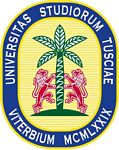

Today any place can be a place of contemporary art, the museum or any other ancient or modern place to be. In the past few decades the practice of going “outside of the museum” has spread involving both the city, with its squares, streets, buildings, and the land, with its parks and gardens. The contemporary imagery wants to relate to those places, artists want to integrate their works in everyday reality and engage the audience that becomes an active part of the work. The interaction between art and nature finds a choice location in the territory of Tuscia.
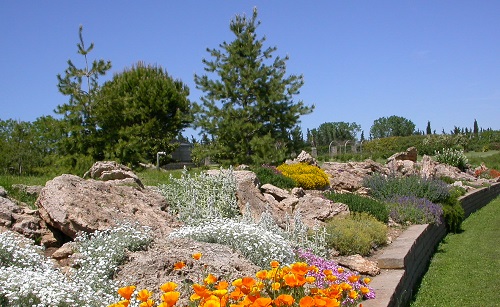
The presence of famous historic villas (Bagnaia, Caprarola etc.) and the Sacro Bosco di Bomarzo (Sacred Forest of Bomarzo) was crucial for the settlement of several international contemporary artists. They have chosen to create here parks / gardens hybridizing artistic creativity with the natural environment, that always retains an important role. A few of these artist gardens (such as Paul Wiedmer’s La Serpara in Civitella d'Agliano) have been shown by Tuscia’s Contemporary Art Network, consisted of a permanent collection of artworks which is continually augmented. The artworks are situated in numerous seats of the University of Tuscia.
Art and nature at the Botanical Garden itinerary allows you to follow the steps in creating a natural landscape, but designed by man, and at the same time its “reconstruction” via the presence of a few works from the Tuscia’s Contemporary Art Network. The artist’s works, created to be outdoors, synergistically communicates with the environment.
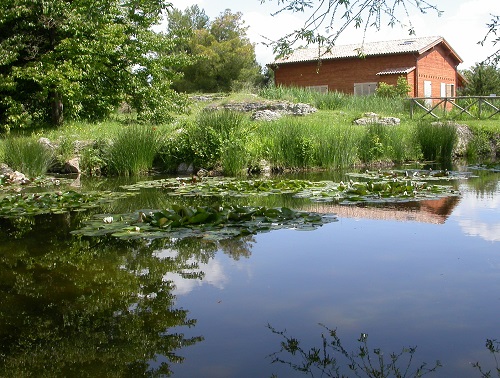
The Botanical Garden was built in 1991 and is located near a sulphurous thermal spring in the natural area of the Bullicame Park. The area, mentioned in Dante’s Inferno, is rich in Etruscan and Roman archaeological remains and was a spot, where Romans, in ancient times, hosted important thermal bath. From the Middle Ages to the late nineteenth century, the area holds great importance for the economy of the City of Viterbo, because of Viterbo’s intention for maceration of hemp and flax in the reservoirs connected to the source of hot sulphurous water through a system of channels.
This place, for its calcareous nature, would never have been thought of as an ideal site for a botanical garden. Nonetheless, it was built here thanks to the tenacity of prof. Angelo Rambelli.
A deep work of accommodation made it possible to create a space in which very different ecosystems can be observed, like the Desert, with the rich collection of succulent plants or “piante grasse”.
The works of the Art and nature at the Botanical Garden itinerary are site-specific and interact with the environment for the enhancement of the territory. They were commissioned by the University for the exhibition Terra come Arte (Earth as Art, 2009), and the artists were able to interpret the genius loci.
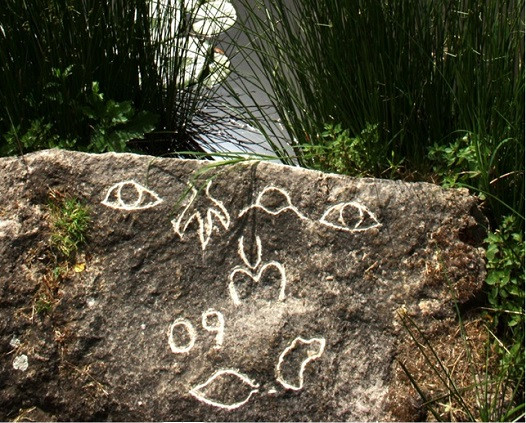
 Garden-I
Garden-IThe itinerary starts with a work of Francesco Narduzzi, who engraved an inscription in a stone at the edge of a pond. It is an inscription of an “alphabet” made of symbols that evokes the world of Nature and Mother Earth (Garden-I).
Francesco Narduzzi, Garden-I, 2009
Go to the ICCD cards >>
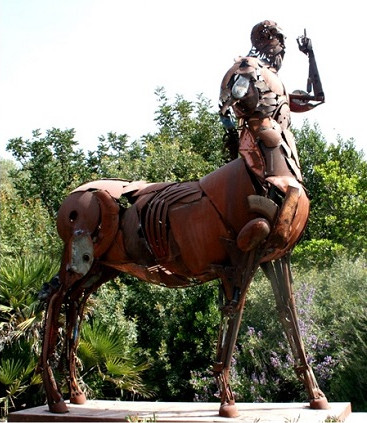
 Chiron
ChironAmong the thick vegetation, Patrick Alò has placed a modern Chiron, the centaur forerunner of herbal science. The work was created by an artistic operation that uses recycled industrial iron.
Patrick Alò, Chiron, 2009
Go to the ICCD cards >>

 Ant 2070
Ant 2070On a rock that marks the border of the Garden, Stefano di Maulo has engraved a giant ant (Formica 2070, Ant 2070), the symbol of a cohesive and laborious community life.
Stefano Di Maulo, Ant 2070, 2009
Go to the ICCD cards >>
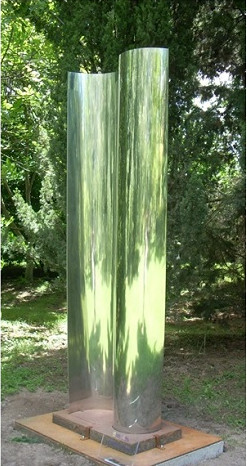
 The Wave
The WaveThe itinerary concludes with the work of Attilio Pierelli, who wanted to install in a grassy clearing one of his polished stainless steel sculptures designed to be outdoors (L’onda, The Wave, 1966). It consists of sheets of reflective foil variously bent to form curved surfaces. These surfaces generate a field of constantly changing distorted reflections. The sculpture engages the environment and the observer drawing them into an aesthetic and unreal image space.
Attilio Pierelli, The Wave, 1966
Go to the ICCD cards >>